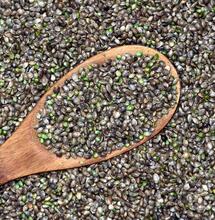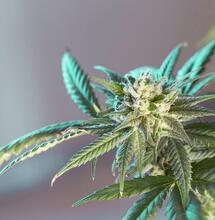Eat, Drink, Vaporize or Smoke?

In this installment of the Weed 101 series - an introductory column aimed at educating less-experienced smokers and growers - we reveal the differences between smoking, vaporizing, consuming, or topically applying Cannabis as a medicine.
In this installment of the Weed 101 series - an introductory column aimed at educating less-experienced smokers and growers - we reveal the differences between smoking, vaporizing, consuming, or topically applying Cannabis as a medicine.
In this installment of the Weed 101 series – an introductory column aimed at educating less-experienced smokers and growers – we reveal the differences between smoking, vaporizing, consuming, or topically applying Cannabis as a medicine.
It's nearly impossible to watch American television without becoming inundated by prescription drug commercials. After being regularly subjected to the various worrying claims of the actors, it's not surprising that many people are so easily convinced to alter their body chemistry by swallowing piles of pills. With sixteen states having adopted some form of pro-pot legislation (at press time, Connecticut was attempting to become the seventeenth), it's obvious that the general public is curious about this non-chemical alternative, having been fed so much disinformation about the plant. Therefore it is imperative that new medi-weed patients become as informed as possible.In spite of its herbal nature, it is important to consult your doctor(s) or other medical practitioners before introducing any medication into your system. However, as Cannabis has been subjected to so much stigma and repression in the US, many medical professionals are still either unwilling – or unable – to responsibly and effectively dispense information along with the medi-weed prescriptions. The following is intended as a rough guide to the differences between the three major methods of medicating with Cannabis.
 Eating a Cannabis-infused food product, savory or sweet, tends to impart a relaxed, sedated effect, as consumed cannabinoids are metabolized in a different way than when inhaling the substance. This feeling may take anywhere from twenty minutes to two hours to kick in, regardless of your level of experience, frequency of use – or whether weed or hash was used in its production. Patients seeking an indica-style 'down' effect usually benefit from consumed Cannabis, minus the negative consequences associated with smoking.
Eating a Cannabis-infused food product, savory or sweet, tends to impart a relaxed, sedated effect, as consumed cannabinoids are metabolized in a different way than when inhaling the substance. This feeling may take anywhere from twenty minutes to two hours to kick in, regardless of your level of experience, frequency of use – or whether weed or hash was used in its production. Patients seeking an indica-style 'down' effect usually benefit from consumed Cannabis, minus the negative consequences associated with smoking.
If you want to eat some weed, baked goods are not your only option. Cooking oils, butter, tinctures, sodas and other drinks, spreads, and much more are available these days; often your local dispensary (or local hippie) will be able to provide at least one of these smoking alternatives. While the non-smoking approach is preferable for health reasons, some ailments are actually better treated with metabolized weed rather than inhaled. The downside to this application is that dosage is often arbitrary, and the time from consumption to onset of effect is unpredictable – even seasoned users find that the same dosage of the same cake, for example, takes different amounts of time to work and imparts varying strength of effect each time they eat it.
One exception to the delayed-effect rule may be tinctures. Offered in various forms, including sublingual ('under the tongue') drops, sprays, oils, etc., tinctures are sometimes faster-acting, as they consists of a solution of cannabinoids dissolved in alcohol and generally absorb directly into the body via mucous membranes.Inhalation (smoking, vaporizing):
Inhaling cannabinoids, either through smoking or vaporizing, would appear to be preferable to smoking. In many cases the relatively immediate action of Cannabis being absorbed through the lungs into the bloodstream delivers better therapy to those suffering from certain ailments, such as asthma, nausea or glaucoma. In the case of nausea sufferers – specifically chemo or AIDS wasting syndrome/cachexia patients – medicating with Cannabis is necessary in order to lower pain levels and stimulate appetite. Many prescription drugs actually work better when taken with food (obviously you should consult your doctor or pill instructions); however, if someone is debilitated by nausea, they are often unable to eat for days. In such cases, a 'space' cake or other 'medible' will not necessarily help, since the patient is unable to eat anyway.

Inhaling weed, hash, hash oil, 'budder', etc. is preferable in a vaporizer, which heats the product to the melting point of the active substances, the cannabinoids. As the temperature is not high enough to trigger combustion – unless the product is over-vaporized or the temperature is set too high – the trichomes are heated to the point where they burst, turning from liquid to vapor. The patient only inhales the helpful cannabinoids, which are all released at slightly different temperatures, forgoing the harmful carcinogens, smoke and other contaminants. Vaporizers generally impart a high, happy feeling, whereas smokers receive the more intended effect of the original strain: high/energized from sativas and hazes, and stoned/relaxed from the indicas.
Smoking should be considered a 'last resort'; some patients are either unaware of the positive attributes of a vaporizer, unable to purchase one, or simply incapable of making certain models or methods work properly due to the constraints of their illness. If your ailment requires inhaled cannabinoids and vaporizing is not an option, bongs (water pipes), pipes, screens and other smoking paraphernalia should be glass – not plastic, wood, metal, etc. Joint smokers must be mindful of the contents of their rolling papers, filter tips, and any mixing ingredients, whether tobacco or herbal tobacco alternatives. Even the butane sucked from your lighter through the joint or bong should be considered. All smokers should do their best to source responsibly-grown, organic products. Many test labs are springing up in pro-pot states, particularly in California, so these days it's actually possible to find out if you're smoking high quality weed free of contaminants, or commercially produced garbage.
Topical Application (tinctures, hash oil, creams, lotions, poultices, etc.):
Perhaps the least-known approach to Cannabis as medicine is through topical application. Rick Simpson famously advocates this method, popularized through his website (www.phoenixtears.ca), which involves applying high-grade hash oil externally to ailments such as skin cancer, while supplementing it or treating other diseases internally by eating small doses of the product.
Lotions, creams and tinctures containing cannabinoids also tend to have a similar effect to topical anesthetics, lending to a less painful recovery period for burns, blisters, etc. For thousands of year, hemp flowers (and sometimes leaf material) has been pounded into poultices, mixed with other helpful and healing herbs and applied directly to the skin. Psoriasis, eczema – and even herpes – have been treated via this method, capitalizing on hemp's anti-bacterial and anti-fungal properties, as well as others.
Do some research – you may find that an alternative Cannabis consumption method may be right for you, and help you even more.



